While most e-readers can display special characters (such as and ), many cannot search for words containing them, unless the special characters themselves are typed into the search box. If you are unable to type these characters, please browse for your term using the .
OXFORD QUICK REFERENCE
A Dictionary of
Plant Sciences
Michael Allaby has written many books on nature and environmental science. He is the General Editor of the Oxford Dictionaries of
Zoology and
Ecology, and co-author of the
Dictionary of Geology and Earth Sciences. Other publications include
The Gardeners Guide to Weather & Climate,
The Dictionary of Science for Gardeners, the
Encyclopedia of Weather and Climate; the
Facts on File Weather and Climate Handbook; and the
DK Guide to Weather. C. C.
Whitmore Michael Kent  For recommended web links for this title, visit www.oxfordreference.com/page/plant when you see this sign.
For recommended web links for this title, visit www.oxfordreference.com/page/plant when you see this sign.  Great Clarendon Street, Oxford, OX2 6DP, United Kingdom Oxford University Press is a department of the University of Oxford. It furthers the Universitys objective of excellence in research, scholarship, and education by publishing worldwide. Oxford is a registered trade mark of Oxford University Press in the UK and in certain other countries Text Oxford University Press 1992, 1998, 2006, 2012, 2019 in the compilation and editorial matter Michael Allaby 1992, 1998, 2006, 2012, 2019 The moral rights of the author have been asserted First published as an Oxford University Press paperback 1992 and simultaneously in a hardback edition under the title The Concise Oxford Dictionary of Botany Second edition 1998 retitled A Dictionary of Plant Sciences Revised edition 2006 Third edition 2012 Fourth edition 2019 Impression: 1 All rights reserved. No part of this publication may be reproduced, stored in a retrieval system, or transmitted, in any form or by any means, without the prior permission in writing of Oxford University Press, or as expressly permitted by law, by licence or under terms agreed with the appropriate reprographics rights organization. Enquiries concerning reproduction outside the scope of the above should be sent to the Rights Department, Oxford University Press, at the address above You must not circulate this work in any other form and you must impose this same condition on any acquirer Published in the United States of America by Oxford University Press 198 Madison Avenue, New York, NY 10016, United States of America British Library Cataloguing in Publication Data Data available Library of Congress Control Number: 2018950875 ISBN 9780198833338 ebook ISBN 9780192569783 Printed and bound in Great Britain by Clays Ltd, Elcograf S.p.A.
Great Clarendon Street, Oxford, OX2 6DP, United Kingdom Oxford University Press is a department of the University of Oxford. It furthers the Universitys objective of excellence in research, scholarship, and education by publishing worldwide. Oxford is a registered trade mark of Oxford University Press in the UK and in certain other countries Text Oxford University Press 1992, 1998, 2006, 2012, 2019 in the compilation and editorial matter Michael Allaby 1992, 1998, 2006, 2012, 2019 The moral rights of the author have been asserted First published as an Oxford University Press paperback 1992 and simultaneously in a hardback edition under the title The Concise Oxford Dictionary of Botany Second edition 1998 retitled A Dictionary of Plant Sciences Revised edition 2006 Third edition 2012 Fourth edition 2019 Impression: 1 All rights reserved. No part of this publication may be reproduced, stored in a retrieval system, or transmitted, in any form or by any means, without the prior permission in writing of Oxford University Press, or as expressly permitted by law, by licence or under terms agreed with the appropriate reprographics rights organization. Enquiries concerning reproduction outside the scope of the above should be sent to the Rights Department, Oxford University Press, at the address above You must not circulate this work in any other form and you must impose this same condition on any acquirer Published in the United States of America by Oxford University Press 198 Madison Avenue, New York, NY 10016, United States of America British Library Cataloguing in Publication Data Data available Library of Congress Control Number: 2018950875 ISBN 9780198833338 ebook ISBN 9780192569783 Printed and bound in Great Britain by Clays Ltd, Elcograf S.p.A.
Links to third party websites are provided by Oxford in good faith and for information only. Oxford disclaims any responsibility for the materials contained in any third party website referenced in this work.
From the Preface to the First Edition
This dictionary aims to address the needs of students as well as those of anyone whose profession or interest exposes him or her to books, articles, or scientific and technical papers on environmental topics. The dictionary is not a textbook and does not pretend to be one. The first decision the editor of a dictionary must make involves defining the word dictionary itself. The book might contain a limited number of fairly long entries, making it rather like an encyclopaedia.
Alternatively, it might contain a much larger number of much shorter entries consisting only of definitions. A third approach, which has been adopted here, amounts to a compromise between the two extremes. This dictionary contains many very short entries, sometimes of only two or three words. Other entries are longer, going beyond the simple definition to describe complex biological processes as succinctly as is practicable. The result of the compromise is that the book is able to compress into one volume explanations of well over 5000 terms. These are drawn from ecology, Earth sciences, Earth history, evolution, genetics, plant physiology, biochemistry, cytology, and biogeography.
There are brief biographical notes on individuals who have made outstanding contributions to the disciplines relevant to botany, and almost one-third of the entries describe taxonomic groups of seed plants, ferns, algae, mosses, and liverworts, and also fungi, bacteria, and slime moulds. Entries are fairly extensively cross-referenced to words or expressions that have entries of their own or sometimes, for simplicity, to another part of speech (an adjective cross-referenced to its noun, for example) where the entry is easily recognizable. The cross-references use the customary see and compare within or at the end of entries, and asterisks before expressions that have entries of their own (e.g. ). The cross-references should carry the reader from one entry to another, but, of course, the system involves another compromise. Too many cross-references interrupt the flow of the text, making it more difficult to follow rather than easier.
Terms are cross-referenced, therefore, only where the cross-reference may be helpful. Michael Allaby Wadebridge, Cornwall
Preface to the Third Edition
As scientific understanding of genetics has increased and technological advances have reduced the cost and difficulty of sequencing genomes, plant studies have turned increasingly to evolution and phylogeny. The overall direction of plant science has shifted. One consequence is that over the years since the publication of the first edition of this dictionary, access to the genetic relationships among plants has made it possible to revise plant taxonomy, placing it on a firmer evolutionary footing. The need to revise the dictionary for its new edition has given me the opportunity to take account of that development. The entries describing plant families now refer to the orders in which they are placed, and at the same time I have revised the numbers of genera and species in each family in the light of current estimates.
The widely used classification developed by the Angiosperm Phylogeny Group is summarized in an appendix, where I have also added a summary of the present classification for Fungi. In revising the dictionary, I have been helped greatly by Dr Robin Allaby, FLS, FSB, of the University of Warwick, who has scrutinized my revisions and made many of his own. This edition contains many new entries. Some of these relate to plant systematics and others are from molecular biology. Each of the entries in the second edition has been scrutinized carefully. Many have been modified, often in only small ways, in order to clarify them or bring them up to date.

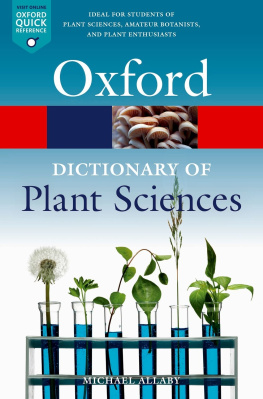

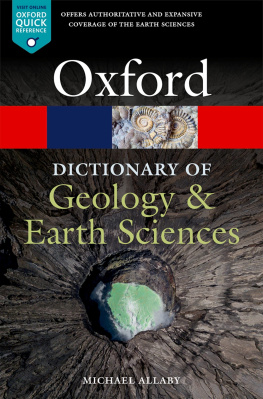
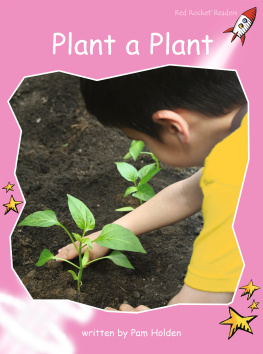
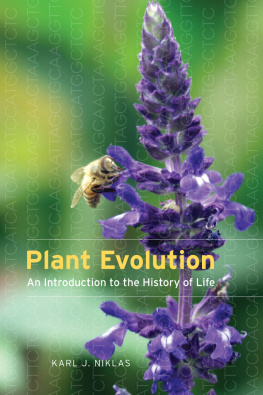

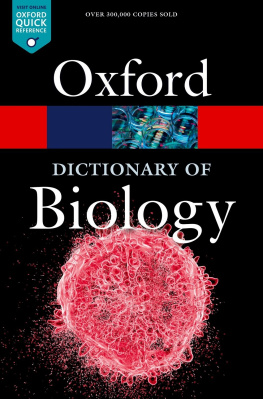


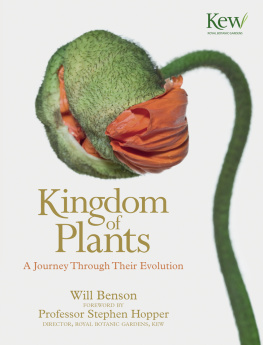
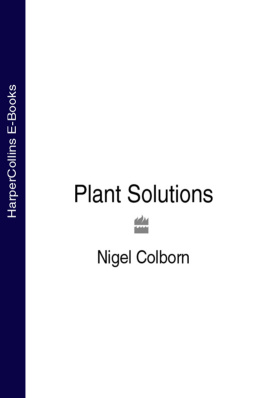

 For recommended web links for this title, visit www.oxfordreference.com/page/plant when you see this sign.
For recommended web links for this title, visit www.oxfordreference.com/page/plant when you see this sign.  Great Clarendon Street, Oxford, OX2 6DP, United Kingdom Oxford University Press is a department of the University of Oxford. It furthers the Universitys objective of excellence in research, scholarship, and education by publishing worldwide. Oxford is a registered trade mark of Oxford University Press in the UK and in certain other countries Text Oxford University Press 1992, 1998, 2006, 2012, 2019 in the compilation and editorial matter Michael Allaby 1992, 1998, 2006, 2012, 2019 The moral rights of the author have been asserted First published as an Oxford University Press paperback 1992 and simultaneously in a hardback edition under the title The Concise Oxford Dictionary of Botany Second edition 1998 retitled A Dictionary of Plant Sciences Revised edition 2006 Third edition 2012 Fourth edition 2019 Impression: 1 All rights reserved. No part of this publication may be reproduced, stored in a retrieval system, or transmitted, in any form or by any means, without the prior permission in writing of Oxford University Press, or as expressly permitted by law, by licence or under terms agreed with the appropriate reprographics rights organization. Enquiries concerning reproduction outside the scope of the above should be sent to the Rights Department, Oxford University Press, at the address above You must not circulate this work in any other form and you must impose this same condition on any acquirer Published in the United States of America by Oxford University Press 198 Madison Avenue, New York, NY 10016, United States of America British Library Cataloguing in Publication Data Data available Library of Congress Control Number: 2018950875 ISBN 9780198833338 ebook ISBN 9780192569783 Printed and bound in Great Britain by Clays Ltd, Elcograf S.p.A.
Great Clarendon Street, Oxford, OX2 6DP, United Kingdom Oxford University Press is a department of the University of Oxford. It furthers the Universitys objective of excellence in research, scholarship, and education by publishing worldwide. Oxford is a registered trade mark of Oxford University Press in the UK and in certain other countries Text Oxford University Press 1992, 1998, 2006, 2012, 2019 in the compilation and editorial matter Michael Allaby 1992, 1998, 2006, 2012, 2019 The moral rights of the author have been asserted First published as an Oxford University Press paperback 1992 and simultaneously in a hardback edition under the title The Concise Oxford Dictionary of Botany Second edition 1998 retitled A Dictionary of Plant Sciences Revised edition 2006 Third edition 2012 Fourth edition 2019 Impression: 1 All rights reserved. No part of this publication may be reproduced, stored in a retrieval system, or transmitted, in any form or by any means, without the prior permission in writing of Oxford University Press, or as expressly permitted by law, by licence or under terms agreed with the appropriate reprographics rights organization. Enquiries concerning reproduction outside the scope of the above should be sent to the Rights Department, Oxford University Press, at the address above You must not circulate this work in any other form and you must impose this same condition on any acquirer Published in the United States of America by Oxford University Press 198 Madison Avenue, New York, NY 10016, United States of America British Library Cataloguing in Publication Data Data available Library of Congress Control Number: 2018950875 ISBN 9780198833338 ebook ISBN 9780192569783 Printed and bound in Great Britain by Clays Ltd, Elcograf S.p.A.